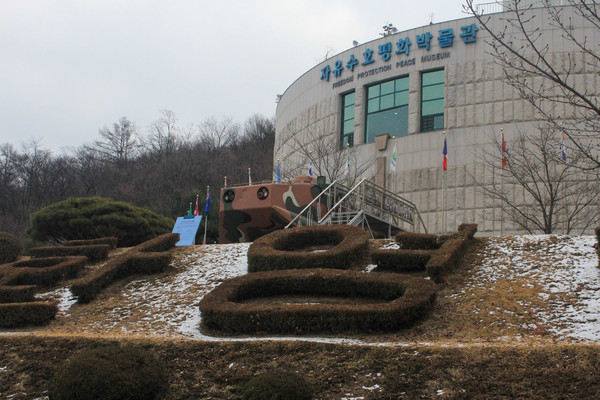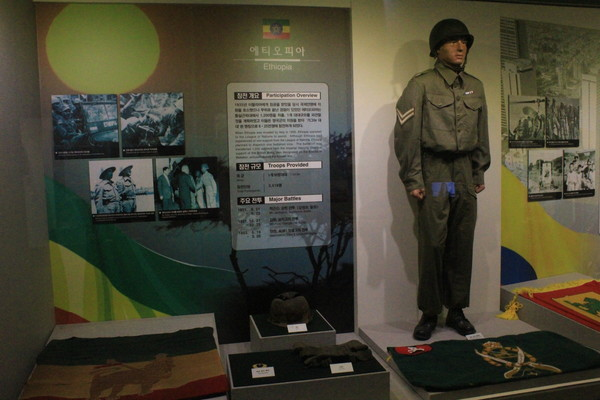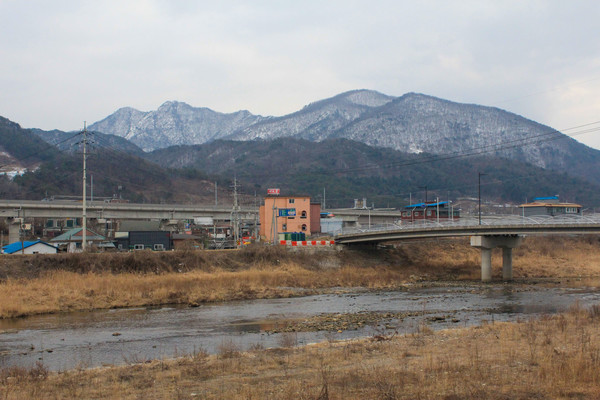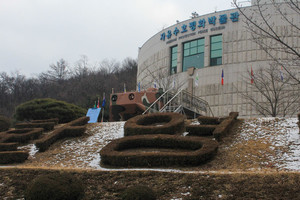- Full Metal Jacket in Dongducheon March 28, 2024
-
Traces of war and division in the city
THE FURTHER north we raise our glances, the more we spot the tragic bruises inflicted by the Korean War. The city of Dongducheon, in this sense, is one of our deepest scars. Located in the northernmost area of South Korea, it was one of the regions most impacted by the war and its byproducts. For the city, especially, the aftereffects of war remain today, as up to 42% of the city’s area is still used as military zones[1]. The city has ultimately attained a military culture, a decidedly unique characteristic not present in other Korean cities. On a wintry day where spring was far yet to come, I hastened myself to take the metro that would usher me into the city.
 PHOTOGRAPHED BY SHIN JUNG-YEOP
PHOTOGRAPHED BY SHIN JUNG-YEOP PHOTOGRAPHED BY SHIN JUNG-YEOP
PHOTOGRAPHED BY SHIN JUNG-YEOP
Cherishing the iron will
The Korean War is widely recognized as a tragedy that occurred within the same ethnic group, with many failing to acknowledge the significant contributions of the United Nations Command (UNC). Assembled with the dedication of 22 countries around the globe, UNC was the world’s first attempt at collective security under the United Nations system[2]. They not only participated in operations to restore peace within the peninsula, but also assisted in reconstructing infrastructure and providing civil medical support. The multinational military force, despite its commitment, is rarely spotlighted as a prominent figure in the war. My first destination in Dongducheon was the Freedom Protection Peace Museum, one of the few venues in Korea that honor the invaluable traces of the UNC.
After taking a 30-minute walk from Soyosan Station, I confronted a colossal building with thickly forested hills standing around it in the background. Flags of the nations that had participated in the UNC were hanging in front of the entrance, indicating the purpose of the museum. War materials that were used in real battlefronts, from rusty tanks to towering artillery, were placed here and there around the museum, surrounded by green fields to add a sense of silence. Upon opening the gates, colorful traces of the Korean War were placed all around the three-story building. Black-and-white photographs of the war, military uniforms of every nation in the UNC, and miscellaneous materials from the battlefront were displayed to provide detailed accounts of the brutal incident. The most surprising feature was chambers providing virtual reality experiences and rare footages of the UNC, an interactive program where visitors can better sympathize with the intensity of the Korean War. Amplified by a sense of antiquity pervading the edifice, the Freedom Protection Peace Museum was valuable enough in spotting the traces of warfare. PHOTOGRAPHED BY SHIN JUNG-YEOP
PHOTOGRAPHED BY SHIN JUNG-YEOPThis article was contributed by Yonsei University's student-led English monthly, The Yonsei Annals, written by its reporter Shin Jung-yeop.
Read the full article at the Yonsei Annals' website: http://annals.yonsei.ac.kr/news/articleView.html?idxno=11176
show mobile menu
mobile menu




